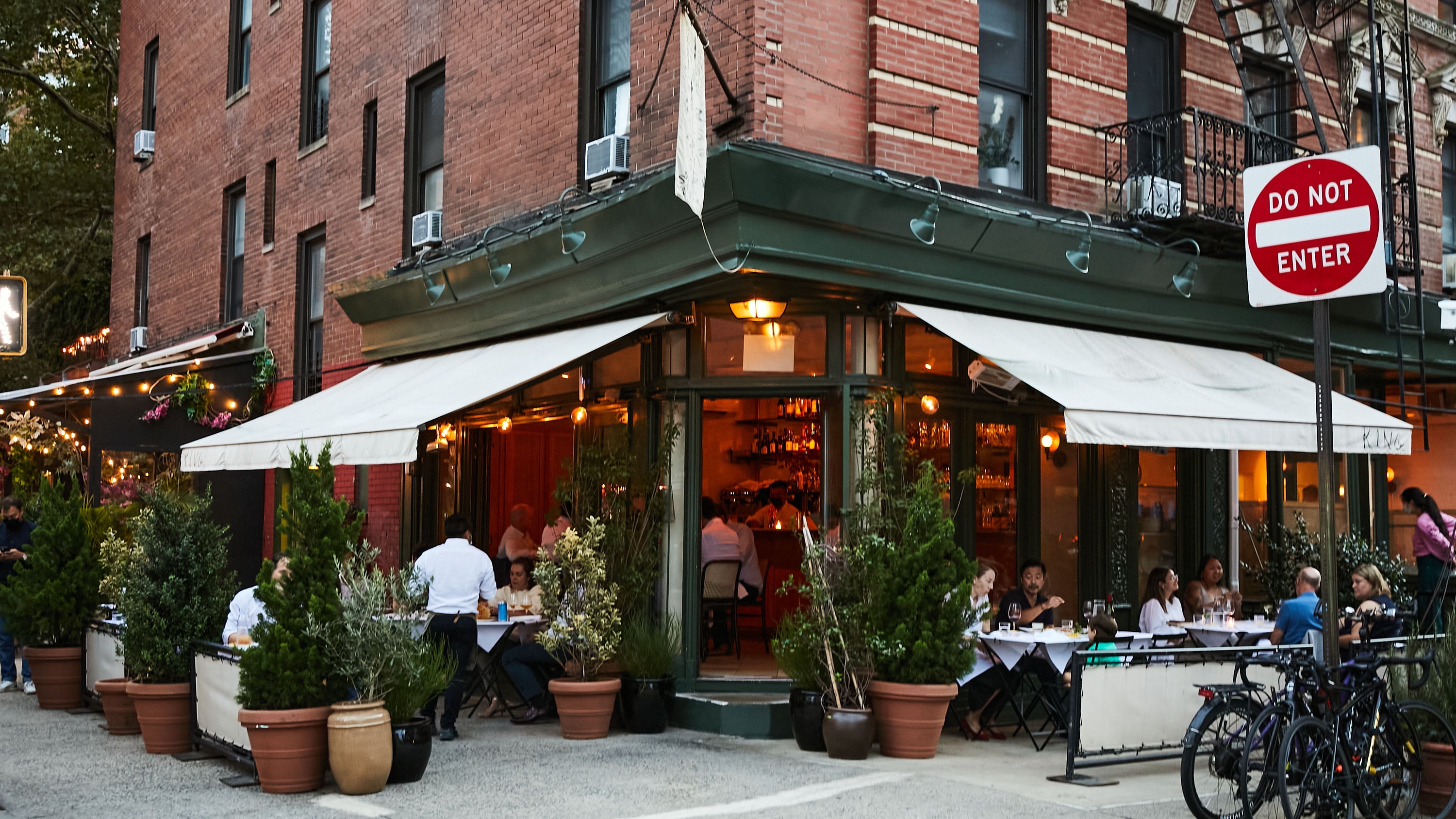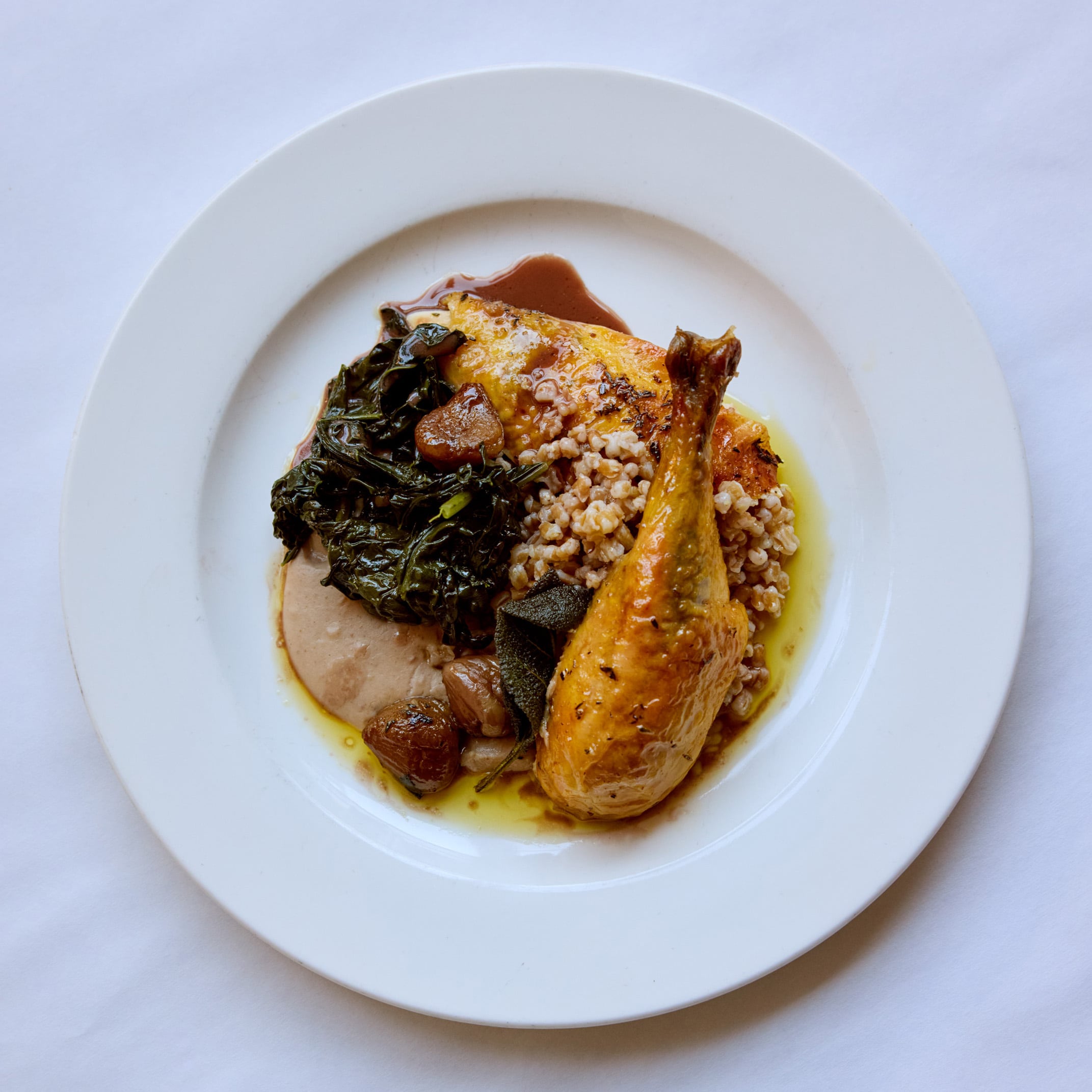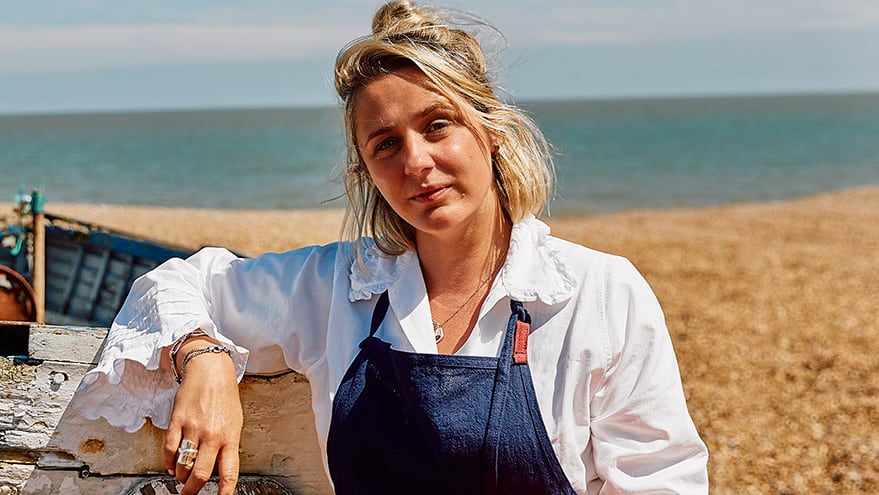Located on the corner of King Street and Sixth Avenue in New York’s SoHo neighbourhood, King is one of the Big Apple’s most highly-regarded restaurants. Ex-River Café chefs Jess Shadbolt and Claire de Boer, along with Annie Shi - another alumnus of top London restaurants having worked at The Clove Club - launched the restaurant in 2016 armed with little more than the “naivety and boldness of youth”.
Nearly a decade on and having recently been named the sixth best restaurant in the New York Times’ list of the top 100 places in the city, it remains one of the hardest places to bag a table in Manhattan. Taking much of their inspiration from France and Italy, the trio oversee a tight (certainly by New York standards) daily changing menu that focuses on simple, high-quality ingredients from local farmers markets.
We sat down with Shadbolt to discuss how tariffs have impacted her sourcing policies, working for Ruth Rogers and the late Rose Gray, and her upcoming British-inspired pub.
King opened nearly a decade ago. How have you retained your status as one of New York’s hottest restaurants?
We’ve always tried to keep moving forward. As a kitchen, restaurant and, I suppose, a brand we have always tried to think dynamically about how we can evolve King while remaining true to who we are. For some people, we are a special occasion place, but we also have a woman that comes and sits at the bar three times a week. We try and fill a lot of gaps for a lot of people. We have a bakery that is run out of King’s bar in the mornings, and we also have a much larger Italian canteen called Jupiter within the Rockefeller Centre. We also do a lot of parties and collaborations.
What’s it like sourcing high quality French and Italian ingredients in the US at the moment?
The tariffs and rising costs more generally have made imports more difficult. But we are lucky here because we have access to the Hudson Valley and the Finger Lakes. There has been an evolution in how and what is grown there in recent years. We can get things like puntarelle and treviso locally as well as produce from further afield, like beautiful, dried beans from a second-generation Italian farmer in California. We can echo the flavours of Europe because the US has a varied climate. And we will use unexpected ingredients if they are good. For example, one of our desserts uses maple from Vermont, which is obviously neither French or Italian, which we use to flavour a custard that is served with pears.

How is business across the group?
We’re very busy at King but US restaurants are in a similar position to UK ones at the moment; it’s very hard to turn a profit due to rising costs. There’s just not much juice left to squeeze. Margins are getting smaller and smaller. It’s especially hard for single site, owner-run restaurants that want to pay people properly and use good ingredients.
How did you get into the restaurant world?
I’ve always loved to cook but I started out in PR and events. In 2008 I got a job as a PA to Ruth Rogers and Rose Gray at The River Café because I wanted to see restaurants from the inside out. It was a great role because it was across everything including the restaurant, events, PR and their cookbooks. I got to witness how these two amazing women operated, for which I’m very grateful, and I immediately fell in love with the rhythm of the restaurant. After five years, I left to attend Ballymaloe Cookery School (in County Cork, Ireland). Ruthie then asked me to come back as a chef, and you can’t say no to her, so that is what I did. I spent a few years cooking at The River Café before heading to the US.
Why did you choose New York?
There wasn’t much thought behind it. I’d met Claire (de Boer, one of Shadbolt’s business partners) while working for Ruthie. Looking back, it was a crazy thing because we didn’t know what we were doing really. But we were willing to work very hard. I’d been there a couple of times with Ruthie (who is originally from the US) and had been completely blown away by it. I was thrilled it was an option for us.
What were the early days like?
It’s hard to open a restaurant period. But it’s even harder when you have limited experience and harder still when you’re in a city and a country you don’t really know. We had no contacts and no understanding of the many restrictions and requirements including labour and permitting. A couple of people took us under their wing including Johnathan Waxman (the New York chef and restaurateur) and helped us through it. King was a slow burn. We didn’t do any PR initially; the goal was to get a good review from Pete Wells who was making or breaking restaurants at the time at the New York Times. He came in shortly after we opened and then we didn’t see him again for six months. I think he was being kind because we weren’t ready.

What was his verdict?
He gave us a great review. It was published around a year after we opened and was a turning point for King. He understood what we were trying to do at a point when a lot of our guests didn’t. At the time, short, regularly changing menus were rare in New York. We were also offering dishes that many New Yorkers hadn’t heard of, like pot au feu. People also hated the fact that we would run out of stuff, which happened a lot because we were working with small farms and we were a tiny team back then.
We understand you have another place launching soon…
Yep, Annie (Shi, Shadbolt’s other business partner at King) and I are opening a restaurant next door to King called Dean’s. It will be a British-inspired pub with a focus on seafood. We’re going to do things like potted shrimp with hot buttered crumpets; angels on horseback; stargazy pie; and ham egg and chips. I’ve been away from London for 10 years now and I have a real nostalgia for British food. It’s been nice to revisit some of the heritage cookery of the UK. The understanding of British food is a little confused over here so I’m looking forward to setting the record straight.


